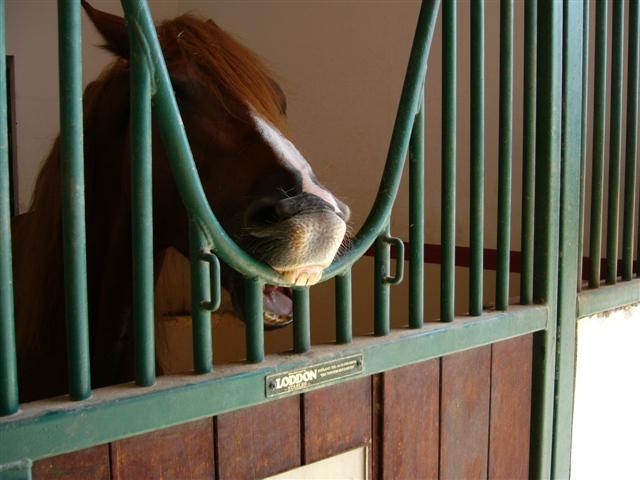
A Compromise
Having horses stabled for short or long periods inevitably leads to compromise. Just as we have issues with being in an office all day, so do horses when they are stabled. Instead of roaming in an area of hundreds of hectares, as they would have in the wild, they find themselves almost immobile. This in turn can contribute to behavioral vices as well as health implications:
-
Abnormal tooth wear from short-fibred feed
- Wind sucking
- Crib biting
- Weaving
- Pawing
- Wall-kicking
- Respiratory illness
- Inhaled dust irritation
- Colic
- Aggressive behaviour
- Dental overbite due to feeder positioning
- Separation anxiety
- Azoturia (tying-up)
- Reduced bloodflow to the feet
Stabling generally makes grooming, saddling and other horse handling less time consuming in comparison to an animal out on pasture. Stables may also provide horses with shelter from the elements and makes keeping track of fluid and feed comsumption simple. It is a widely accepted view that horses are more content when spending time out on pasture surrounded by their peers.
Some Solutions
With regard to the improvement of dental wear the three major changes that you can contemplate are:
- Putting feeders down on ground level and having a field of vison to other horses. These actions encourage the horse to ingest and masticate whilst the nose is at ground level, the most natural position. By having the head at this level, the position of the lower jaw is also changed about 5mm forward from where it would be if the head was raised. That means incisors and (pre)molars match together correctly.
- Instead of chaff and pellets, a diet with more long roughage reduces the incidence of serrated bite and it increases the length of time the horse can keep itself occupied with feeding. Both feeder position and roughage help prevent many serious dental-related ailments.
- Improving visual communication with other horses to prevent traits that cause damage to the teeth such as cribbing and wind-sucking.
